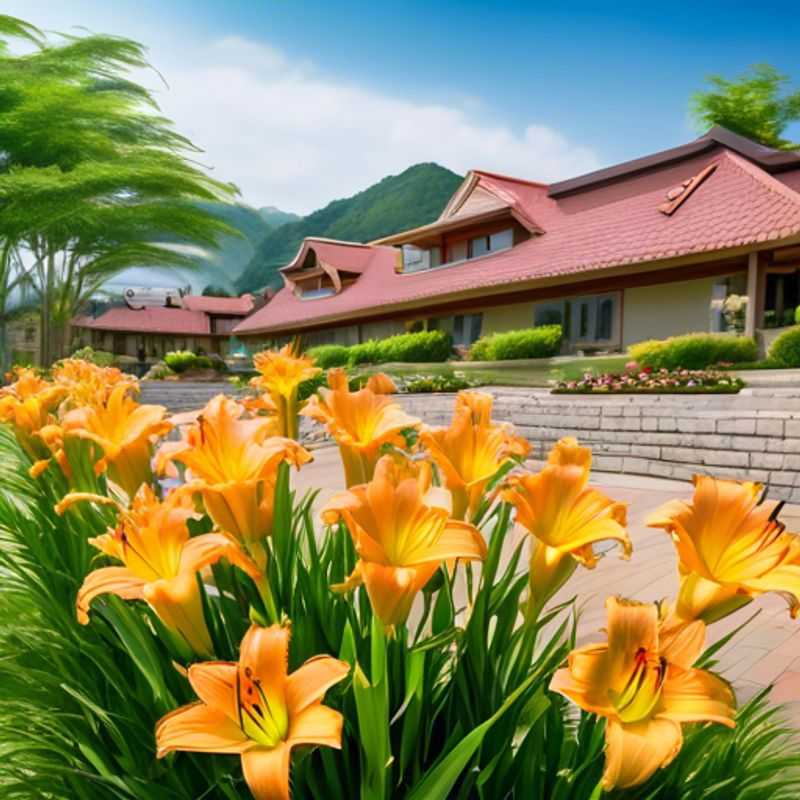Top 4 Most Important Things to Know About Daylily Care and Maintenance

Daylilies: The 4 Pillars of Care and Maintenance
Ah, daylilies!

Daylilies: Sunshine and Drainage - The Key to Thriving Blooms
Daylilies are a popular choice for gardeners due to their vibrant colors, ease of care, and long blooming season. These hardy plants thrive in well-drained soil and full sun exposure, making them a relatively low-maintenance addition to any garden. To ensure successful growth, it's crucial to select a location that receives at least 6 hours of direct sunlight daily.
Regarding soil, daylilies prefer a well-drained soil that allows excess water to escape. Poorly drained soil can lead to root rot, hindering the plant's growth. If your soil is heavy clay or tends to hold water, consider amending it with compost or sand to improve drainage.
Daylilies are relatively drought-tolerant once established, but consistent watering, especially during the initial growth stages, is vital for their health and flowering. Regular watering is essential, especially during hot summer months. Water deeply, allowing the soil to dry out slightly between waterings. Avoid overwatering, which can lead to root issues.

When to Divide and Replant: A Guide for Thriving Plants
Dividing and replanting plants every 3-5 years is a common practice for various reasons. It can rejuvenate the plant, improve its health, and even enhance its flowering and fruit production. While the specific timeframe can vary depending on the plant species, the general guideline of 3-5 years is a good starting point.
The division process involves carefully separating the plant into multiple sections, each containing roots and foliage. This allows for the creation of new, independent plants. Replanting these divisions in fresh soil provides a new environment with better nutrient availability, which can significantly improve the plant's growth and vigor.
The benefits of dividing and replanting are numerous: It encourages new growth, removes crowded roots, improves drainage, and can help control the spread of certain plant diseases. However, it's important to note that not all plants require division. Some plants thrive in a clumping habit, while others are more suited to remaining in their original position.
When considering the cost of dividing and replanting, there are a few factors to take into account. The main expense usually involves purchasing new potting soil or amending the existing soil. Additionally, you may need to purchase new containers if you are repotting your plants. However, if you are skilled in plant care and propagation, you might be able to avoid these costs by reusing existing containers and soil.
For a comprehensive understanding of dividing and replanting specific plants, it's always a good idea to consult reliable gardening resources or seek guidance from a local horticultural expert. They can provide tailored advice based on your plant type, climate, and individual needs.

Deadheading: How to Encourage Continuous Blooming in Your Garden
Deadheading, the process of removing spent blooms from plants, is a simple yet powerful technique that encourages continuous flowering. It's like giving your plant a little nudge to keep producing beautiful blossoms.
When you remove spent blooms, you're essentially telling the plant to focus its energy on creating new buds instead of wasting it on producing seeds. This is because the plant naturally wants to reproduce, and removing the spent bloom signals that it's time to try again.
Deadheading is particularly beneficial for plants that produce flowers throughout the growing season. By removing spent blooms, you can extend the flowering period and enjoy a more vibrant display. It's like giving your plant a little "boost" to keep producing beautiful blossoms for longer.
Deadheading is a simple process that involves removing the spent bloom, usually by pinching it off with your fingers or using pruning shears. It's best to remove the bloom before it starts to form seeds, as this will ensure that the plant focuses its energy on new flower production.
The exact method of deadheading can vary depending on the type of plant. For example, you may need to cut the stem back to a leaf node or just remove the flower head. Be sure to research the specific needs of your plants before deadheading.

Early Spring Fertilization: Giving Your Daylilies a Growth Boost
Fertilizing daylilies in early spring is a crucial step in promoting healthy growth and abundant blooms throughout the season. A balanced fertilizer, applied before new growth emerges, provides the essential nutrients daylilies need to thrive. Choose a fertilizer specifically formulated for flowering plants, as it contains the right balance of nitrogen, phosphorus, and potassium. Follow the recommended application rates on the product label, as excessive fertilization can harm your plants.
You can apply the fertilizer granules directly to the soil around the base of the daylilies, being careful not to get any on the foliage. Alternatively, you can mix the fertilizer into the soil before planting new daylilies. After application, water the plants thoroughly to help the nutrients penetrate the soil and reach the roots.
For best results, fertilize your daylilies again in early summer, just after they finish blooming. This second application will provide the plants with the nutrients they need for healthy foliage development and to prepare for the following year's blooming cycle. By following these simple steps, you can ensure your daylilies have the best possible start and flourish throughout the season.
